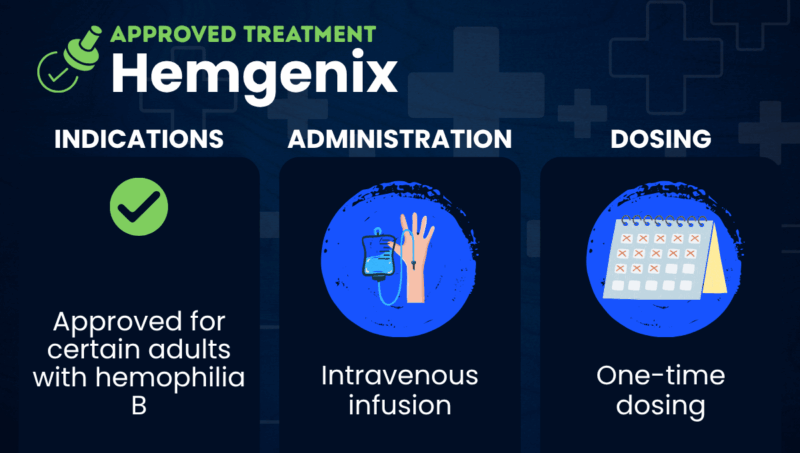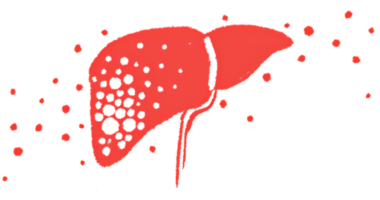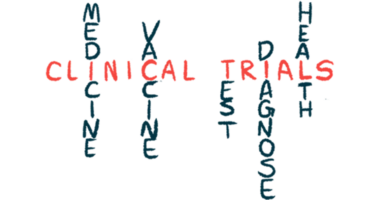Hemgenix (etranacogene dezaparvovec-drlb) for hemophilia
Last updated Oct. 30, 2025, by Margarida Maia, PhD

What is Hemgenix for hemophilia?
Hemgenix (etranacogene dezaparvovec-drlb) is a gene therapy approved to reduce the risk of bleeds in certain adults with hemophilia B. It is administered as a one-time intravenous (into-the-vein) infusion.
Hemophilia B is caused by mutations in the F9 gene, which provides instructions for producing factor IX (FIX), a protein needed for blood to clot. Without enough FIX, patients may experience prolonged bleeding episodes that can be difficult to control.
Hemgenix uses a modified virus to deliver a functional version of the F9 gene to liver cells, the body’s main producers of clotting factors. Liver cells then use the gene’s instructions to produce FIX. This is expected to increase FIX levels in the blood and thereby help to prevent and control bleeding episodes.
The version of the F9 gene used in Hemgenix encodes a variant of FIX known as Padua. This variant has a clotting activity up to eight times higher than that of the normal protein, and is expected to help control bleeding in the long term.
Hemgenix was developed by uniQure and licensed in 2021 to CSL Behring, which markets it globally.
Therapy snapshot
| Brand name: | Hemgenix |
| Chemical name: | Etranacogene dezaparvovec-drlb |
| Usage: | Used to reduce bleeds in adults with hemophilia B |
| Administration: | Intravenous infusion |
Who can take Hemgenix?
Hemgenix is approved in the U.S. for adults with hemophilia B who:
- currently use FIX prophylaxis (preventive treatment)
- are experiencing or have a history of life-threatening bleeding episodes
- have repeated, serious bleeding episodes occurring spontaneously.
In Canada, Hemgenix is approved for adults with hemophilia B who require routine prophylaxis to prevent or reduce the frequency of bleeding episodes.
In the European Union, the therapy is conditionally approved for adults with severe or moderately severe hemophilia B who do not have inhibitors (neutralizing antibodies) against FIX. It is also available in the U.K., Iceland, Liechtenstein, Norway, and Switzerland.
No contraindications are listed for Hemgenix, but patients must undergo testing to confirm their eligibility. Required tests include screening for FIX inhibitors, and blood and imaging tests to assess liver health.
The therapy is also not intended for use in women.
How is Hemgenix administered?
Hemgenix is given as a single intravenous infusion that usually lasts one to two hours at a recommended dosage of 2×1013, or 20 trillion, genome copies per kilogram of body weight (gc/kg). It should be infused at a constant rate of 500 mL per hour (about 8 mL per minute).
The infusion must be administered under the supervision of a doctor experienced in hemophilia or other bleeding disorders, in a facility equipped to treat infusion-related reactions promptly if needed.
Once the infusion is complete, patients are monitored for at least three hours to ensure they are ready to return home. Overall health, liver function, and FIX clotting activity are assessed weekly for the first three months to track a patient’s response to Hemgenix.

Hemgenix in clinical trials
Hemgenix was approved mainly based on data from an open-label Phase 3 clinical trial, called HOPE-B (NCT03569891), involving 54 men, ages 19-75, with severe or moderately severe hemophilia B.
During a six-month run-in period, all patients stayed on their routine prophylaxis. Results showed:
- the annualized bleeding rate decreased from more than four bleeds per year to less than two episodes per year during months 7 to 18 after the infusion.
- FIX levels increased from no greater than 2% to more than 30% at 18 months after the infusion and stayed stable at about 37% for up to two years, with all but three patients (94%) stopping their routine prophylaxis.
- at four years after the infusion, the annualized bleeding rate decreased even more, to 0.4 episodes per year, and patients remained off prophylaxis.
Hemgenix side effects
The most common side effects reported with Hemgenix include:
- elevated liver enzymes, a sign that the liver may be damaged
- headache
- elevated creatine kinase, a sign that muscles may be damaged
- flu-like symptoms
- infusion-related reactions
- fatigue
- malaise.
Other possible side effects of Hemgenix include:
- Infusion-related reactions, including serious allergic reactions (anaphylaxis). Patients should be monitored for signs or symptoms of these reactions, which may include chest tightness, abdominal pain, headache, flushing, or rash, for at least three hours after the infusion. If a reaction happens, the infusion may be slowed or paused, and treatment with corticosteroids or antihistamines may be required.
- Liver toxicity, which may be signaled by elevated liver enzymes. Liver function should be assessed before Hemgenix is infused and weekly for at least three months after the infusion. Corticosteroids may be needed if levels are high.
- Liver cancer. Patients with preexisting risk factors for the development of liver cancer, including liver disease or heavy alcohol use, should be monitored with annual liver ultrasounds and alpha-fetoprotein tests for at least five years after receiving Hemgenix.
- Development of inhibitors that may stop Hemgenix from working properly. If FIX levels are lower than expected or bleeding continues, a test looking for antibodies against FIX may be done.
Hemophilia News Today is strictly a news and information website about the disease. It does not provide medical advice, diagnosis, or treatment. This content is not intended to be a substitute for professional medical advice, diagnosis, or treatment. Always seek the advice of your physician or other qualified health provider with any questions you may have regarding a medical condition. Never disregard professional medical advice or delay in seeking it because of something you have read on this website.
Recent Posts
- Liver rupture leads to hemophilia B diagnosis in newborn: Case report
- One woman’s path to a black belt — and hemophilia diagnosis
- Doctors warn eye bleeding can be first sign of hemophilia A
- I’m still learning how to ask for help ahead of an important surgery
- Gene therapy can help reduce joint bleeds in hemophilia B: New data
Related articles





